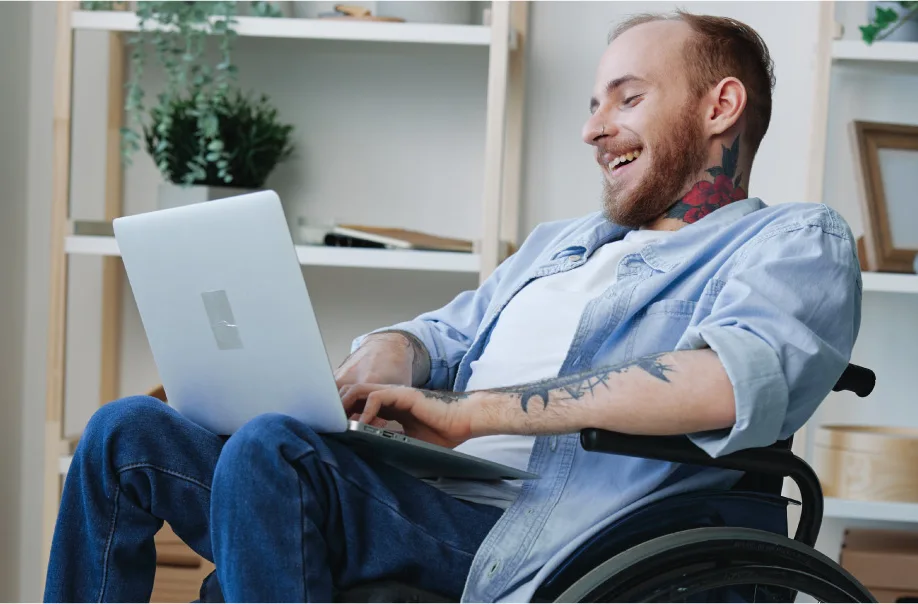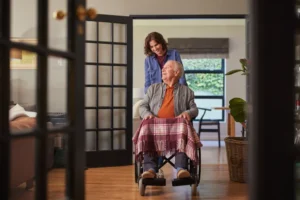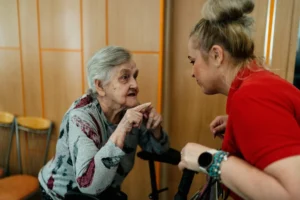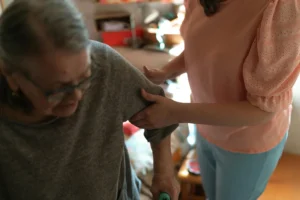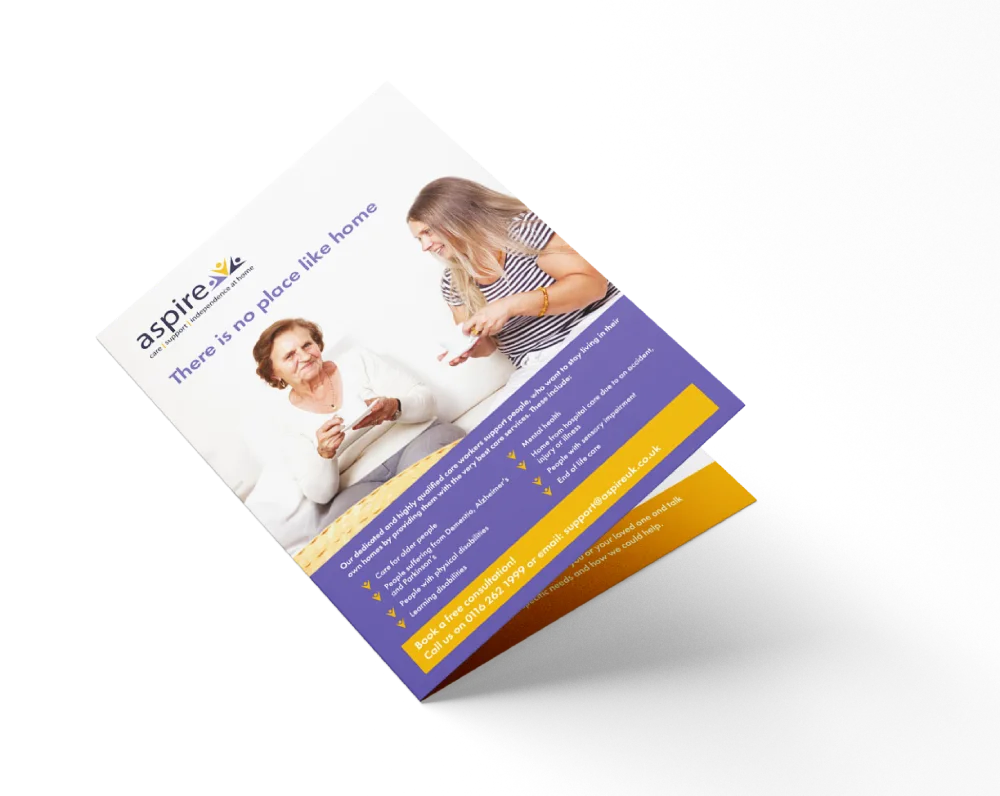Falls are a significant concern in the UK, especially among older adults. Approximately one-third of individuals aged 65 and over, and about half of those aged 80 and over, experience at least one fall annually.
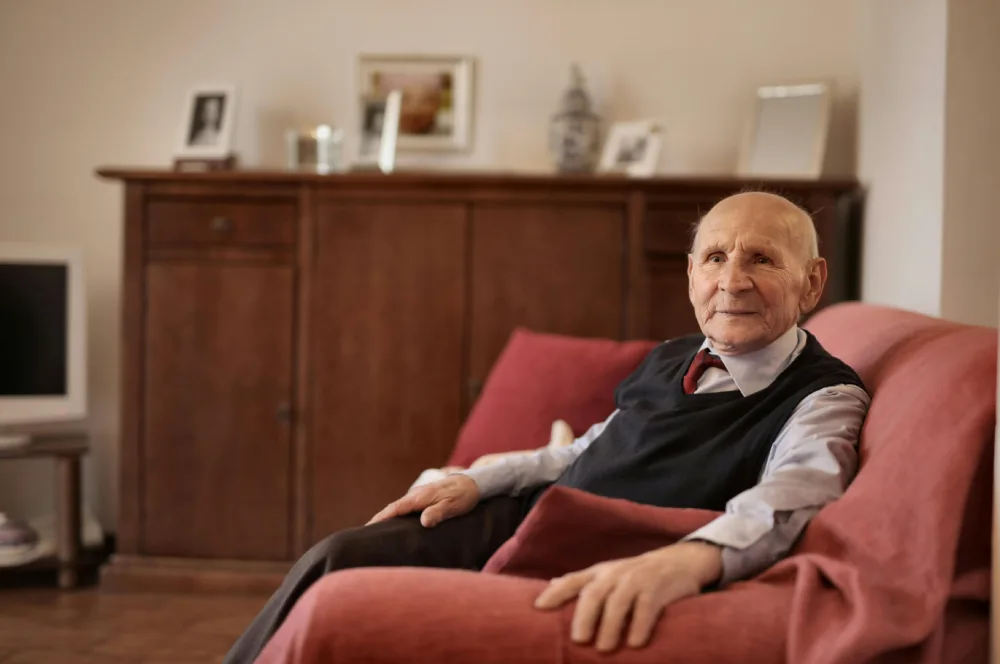
These incidents are not only distressing but also lead to severe injuries, such as hip fractures, which can drastically affect an individual’s independence and quality of life.
The impact on the healthcare system is substantial. Falls are the most common cause of death from injury in those over 65 and cost the NHS over £2 billion a year and over 4 million bed days.
Despite these alarming statistics, many falls are preventable. Implementing small, practical changes in the home can significantly reduce the risk of falls and promote safer living. Our Help at Home page has everything you need to know.

Join us as we talk you through some of these changes as shared by our team of home care experts at Aspire UK.
Common Causes of Falls and What Can Help
Falls can happen to anyone, but for older adults, the risks are much higher. It’s a frightening reality for many families, as a single fall can lead to serious consequences like broken bones or loss of independence. However, understanding why falls occur can be the first step towards prevention.
Here are some of the common reasons falls happen.
Loss of Balance
As we age, our bodies naturally go through changes. Muscle strength declines, reflexes slow down, and coordination isn’t as sharp as it used to be. Even simple tasks—like reaching for something on a high shelf or stepping off a curb—can suddenly feel more challenging and unstable. When these changes creep in gradually, it’s easy to overlook them until a stumble or near-fall makes it painfully clear.
What can help?
Regular strength and balance exercises can slow down this decline. Activities like yoga, tai chi, or even walking can improve confidence and reduce the risk of falls.
Poor Vision
Our eyesight plays a crucial role in detecting obstacles and judging distances. Over time, conditions like cataracts, glaucoma, and macular degeneration can impair vision, making it harder to spot tripping hazards. In dim lighting—common in many older homes—something as small as a step or a curled-up rug corner can become nearly invisible until it’s too late.
What can help?
Ensure regular eye exams and improve home lighting. Bright, well-placed lights, particularly around stairs, hallways, and entrances, can prevent accidents.
Health Conditions
Chronic health issues such as arthritis, diabetes, and neurological disorders like Parkinson’s disease can affect both mobility and balance. Stiff, painful joints may reduce movement, while dizziness or numbness from conditions like diabetic neuropathy can make falls more likely. Each of these conditions adds another layer of risk that can feel overwhelming without proper support.
What can help?
Speak with healthcare professionals to understand how these conditions affect mobility and explore physiotherapy or adaptive tools (like walking aids) that can provide stability and confidence.
Medications
Many older adults take medications to manage various health conditions. Unfortunately, certain drugs—especially sedatives, sleep aids, or blood pressure medications—can cause dizziness, fatigue, or sudden drops in blood pressure. Even a momentary feeling of light-headedness can result in a fall.
What can help?
Ask a GP or pharmacist to review all medications. They can suggest alternatives or adjust dosages to minimise side effects like dizziness or drowsiness.
Preventing Falls by Making the Home Safer
Small changes within the home can significantly reduce the risk of falls, helping everyone, especially older adults, feel safer and more confident in their environment. Here’s how you can make a home safer room by room.
Clear and Declutter Pathways
Ensure that all hallways, staircases, and main walkways are free of obstacles. Items like shoes, bags, and electrical cords can quickly become tripping hazards. Keeping these areas tidy reduces the risk of sudden falls.
Improve Lighting Throughout the Home
Dim or inadequate lighting makes it difficult to see potential hazards, particularly for those with impaired vision. Brighten key areas such as stairs, entrances, and hallways with energy-efficient bulbs. Adding nightlights in bedrooms and bathrooms can also improve visibility during nighttime trips.
Secure Rugs and Mats
Loose rugs can easily slide or bunch up underfoot. Non-slip mats or adhesive strips can help keep rugs in place, reducing the chance of trips. It’s a good idea to avoid rugs altogether in areas like staircases, where the risk is higher.
Install Grab Rails and Handrails
Installing grab rails in high-risk areas such as bathrooms and stairways can provide extra support for those with balance issues. Check that existing handrails are securely mounted and at a comfortable height for easy use.
Keep Floors Dry and Free of Hazards
Wet floors are one of the leading causes of falls, particularly in kitchens and bathrooms. Spills should be cleaned up immediately, and absorbent bath mats can help reduce slippery surfaces. Regularly check for other hazards like loose floorboards or uneven tiles and repair them as needed.
Rearrange Furniture to Maximise Space
A cluttered or poorly arranged room can increase the likelihood of bumping into furniture. Rearrange furniture to create wider, clear pathways that allow for easy movement. Avoid placing low items such as coffee tables in areas where people walk frequently.
Store Everyday Items Within Easy Reach
Falls often occur when people overreach or climb on stools to access high shelves. Ensure that essential items are stored at a reachable height to minimise the need for stretching or balancing on unstable surfaces.
Ensure Safe Access to Stairs
Stairs are one of the most common areas for falls. Make sure they are well-lit, equipped with sturdy handrails on both side and kept free from clutter. Anti-slip stair treads can provide additional grip on smooth surfaces.
Organise and Minimise Cables
Electrical cords that run across rooms can easily catch feet and cause trips. Use cable organisers or run cords along walls where they are less likely to be in the way.
Maintain a Safe Entryway
Entryways can become slippery, especially during wet weather. Place a non-slip doormat at the entrance to reduce the risk of tracking in water. Keep the area clear of loose shoes and umbrellas to prevent tripping.
Regular Home Maintenance Checks
Periodically inspect your home for potential hazards, such as loose floorboards, unstable furniture, and faulty lighting. Address these issues promptly to maintain a safe environment.
Need More Personalised Support?
These small, manageable changes can significantly improve safety at home, preventing falls and giving peace of mind to both residents and their families. A safer home supports greater independence, comfort, and well-being.
If you feel that you or a loved one could benefit from additional support, Aspire UK offers high-quality home care services designed to promote safety and independence. Their experienced team can provide personalised care, advice, and assistance to ensure that your home remains a safe and comfortable place to live.


